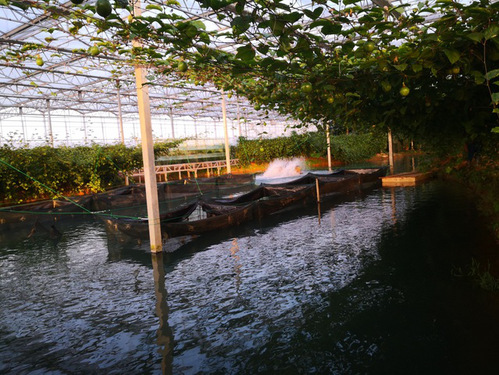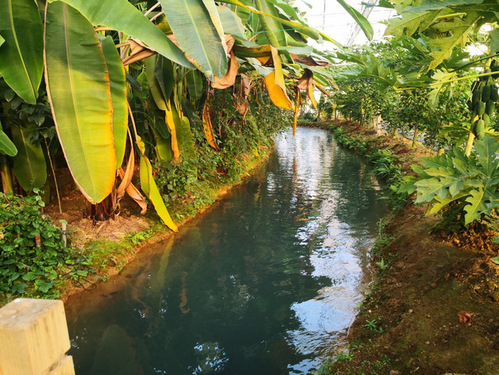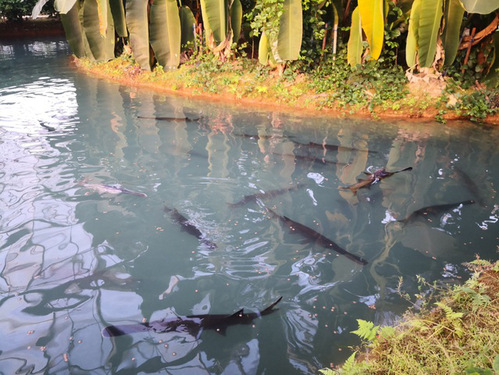Fuzhou of Jiangxi Province, known as “Hinterland of the Western Shore Economic Zone, and Granary of the Ganfu Plain”, is a famous national commodity grain base nourished by the Fuhe River and the Poyang Lake. It is also the gateway of Fujian Province and Guangdong Province. Taiheyuan Pastoral Complex, invested by SHOU teacher He Wenhui in 2017, is the first pastoral complex project in Fuzhou.

Taking green economy as its orientation and adhering to the philosophy of circular eco-agriculture, Taiheyuan Pastoral Complex has fully leveraged existing high-quality agricultural resources to develop six ecological, organic, systematic, efficient, and environment-friendly modern agricultural techniques, that is, “facility agriculture, simulated mountain farming, planting-breeding integration, growing of southern fruits in the north, microbial organic fertilizers, and homology of food and therapy”. Here Chinese herbs and spices are used as substitutes for pesticides, chemical fertilizers are replaced by aquatic plant fertilizers, and pure natural baits made from corn and purple sweet potato are used instead of artificial diets. By maximizing the utilization of land space, recycling water resources, and guaranteeing the quality of agricultural products in all links, the pastoral complex has “zero pesticide, zero chemical fertilizer, zero artificial diet, and zero discharge”, and greatly improved comprehensive agricultural benefits and competitiveness.

Focusing on the three core elements of “pastoral production, pastoral life, and pastoral landscape”, the pastoral complex has managed to control its economic scale within the bearing capacities of eco-environmental capacity and natural resource bearing capacity. In addition, the in-depth integration of agriculture, processing industry, and service industry and the associated symbiosis of agriculture, cultural tourism, and ecology have perfectly embodied the development features of eco-agriculture, circular agriculture, stereoscopic agriculture, and sightseeing agriculture, driven the integration of local resources, functions, and elements, and promoted industrial upgrading and modern development in rural areas.

In Taiheyuan Pastoral Complex Demonstration Area, there are colorful Lycium barbarum and Dendrobium nobile, swaying Rosmarinus officinalis and Cymbopogon citratus, and fruitful papaya, Passiflora edulis Sims, litchi, and longan on the land; in the water, Polyodonspathala, Golden Trout, Langoustine, and Chinese mitten crabs swim around freely. All these combine to manifest a luxuriantly green and vigorously thriving pastoral landscape.
So far, He Wenhui has built a dozen of pastoral complex demonstration areas in Shanghai, Jiangsu Province, Jiangxi Province and so forth, with a total area of more than 10,000 mu. Following the rules of ecology and eco-economics, pastoral complexes try to convert agricultural wastes into precious resources, and advocate the green development of local areas, the training of “specialized farmers”, and the driving of rural re-employment. By promoting agricultural modernization and urban-rural integration, they aim to realize the coordination and unification of economic, social, and environmental benefits, and guide the development of “rural revitalization” and “promotion of agriculture by applying scientific and technological advances”.